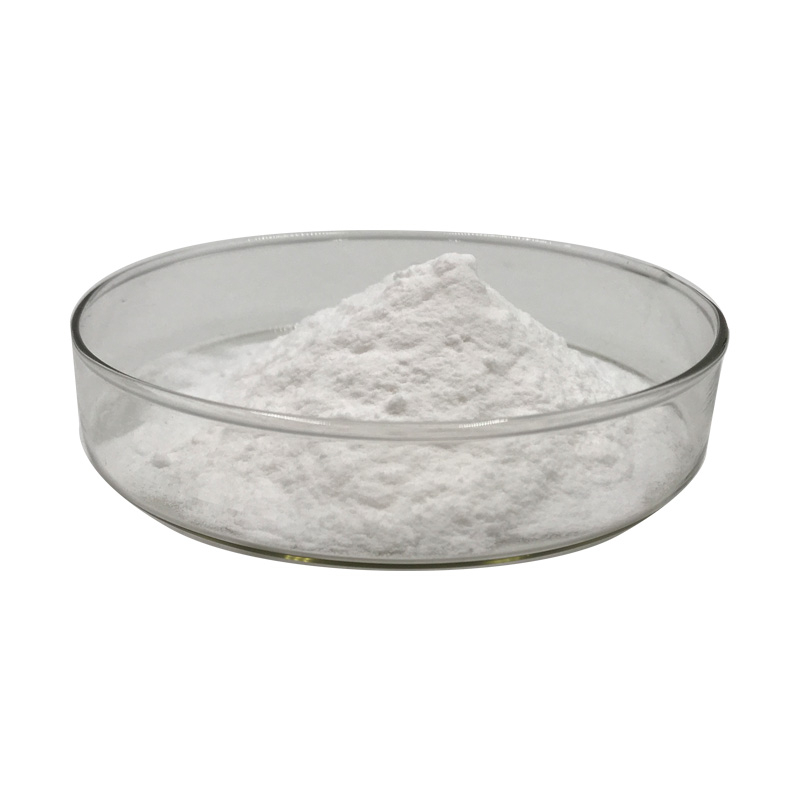Products Description of L-GLUCOSE CAS#921-60-8L-glucose is the enantiomer of D-glucose, a naturally occurring carbohydrate used in numerous cellular processes.L-GLUCOSE Chemical PropertiesMelting point 153-156 °C(lit.)Boiling point 232.96°C (rough estimate)density 1.2805 (rough estimate)refractive index -52 ° (C=5, H2O)storage temp. 2-8°Csolubility H2O: 0.1 g/mL, clear, colorlessform aqueous ethanol solutionpka12.45±0.20(Predicted)color WhiteWater Solubility Soluble in water, alcohol.Merck 14,4459BRN 1724626Stability:Stable.
Contact Now
Products Description of 2-Deoxy-D-glucose CAS#154-17-62-Deoxy-D-glucose is an anti-metabolite of D-glucose. It has the effects of interfering with the synthesis of virus-specific glycoproteins, inhibiting the proliferation of herpes simplex virus, RAN and DNA enveloped viruses, and cancer cells. At present, antiviral and anticancer drugs prepared from 2-deoxy-D-glucose have been clinically used in the treatment of herpes simplex virus and cancer, and medical health products and anti-aging cosmetics prepared from 2-deoxy-D-glucose have also been launched on the market.
Contact Now
Products Description of D(+)-Glucose CAS#50-99-7Glucose is a six-carbon sugar containing an aldehyde group with a molecular formula of C6H12O6. It is the most important monosaccharide in living organisms. Its main function is to provide energy required for physiological activities of the body. It is known that the complete oxidation of 1 mol of glucose releases energy of 2870kJ (686kCal), accounting for 70% to 80% of the total energy required by the body.
Contact Now
Products Description of Palatinose CAS#58166-27-1Palatinose is an isomer of sucrose. It is made from sucrose as raw material and converted and refined by α-glucosyltransferase. It is a sweetener that uses biotechnology - enzyme engineering to change the properties of sucrose. It is a natural nutritional sugar that can avoid the disadvantages and diseases of eating too much sucrose. Palatinose is commonly known as isomaltulose, which is a disaccharide of glucose and fructose combined with α-1,6.
Contact Now
Products Description of Maltose CAS#69-79-4Maltose is the abbreviation of maltobiose, also known as D-maltose and maltose. A disaccharide formed by connecting, condensing, and dehydrating two molecules of α-D-glucose through α-1,4 glycosidic bonds. There is also a free hemiacetal hydroxyl group in the molecule, which is a reducing sugar. Like glucose, it can make Doron's reagent and Fehling's reagent react positively.
Contact Now
Products Description of D-Glucal CAS#13265-84-4D-glucosene, also called D-glucosene, is a pharmaceutical intermediate that can be prepared from pentaacetyl glucose through a three-step reaction.
Contact Now
Products Description of Kojic acid CAS#501-30-4Kojic acid, also known as kojic acid and kojic acid, is an organic acid with antibacterial effect produced by aerobic fermentation of glucose by Aspergillus candida at 30-32°C. Its molecular structure is a γ-pyrone with a substituent. Among the γ-pyrone compounds existing in nature, the only famous compounds are kojic acid and maltol. In 1907, Saito separated kojic acid crystals from rice koji. It was named by Yabuta in 1912 and its structure was determined in 1924.
Contact Now
Products Description of 1-Butylpyrrolidin-2-oneCAS#3470-98-2Colorless liquid1-Butylpyrrolidin-2-one Chemical PropertiesBoiling point 137 °C / 28mmHgdensity 0,96 g/cm3vapor pressure 13Pa at 25℃refractive index 1.4640 to 1.4660storage temp. under inert gas (nitrogen or Argon) at 2-8°Csolubility Chloroform (Slightly)pka-0.41±0.20(Predicted)form Oilcolor ColourlessWater Solubility 1000g/L at 20℃InChIInChI=1S/C8H15NO/c1-2-3-6-9-7-4-5-8(9)10/h2-7H2,1H3InChIKeyBNXZHVUCNYMNOS-UHFFFAOYSA-NSMILESN1(CCCC)CCCC1=OLogP1.265 at 20℃CAS DataBase Reference3470-9
Contact Now
Products Description of Aluminium 2-ethylhexanoateCAS#30745-55-2Used as thickener for printing inksAluminium 2-ethylhexanoate Chemical PropertiesFp >177°Csolubility very faint turbidity in hot 1mol/L NaOHform Powdercolor whiteWater Solubility moderately solubleInChIKeyITXFWNWNWXSDBB-UHFFFAOYSA-KEPA Substance Registry SystemAluminum, bis(2-ethylhexanoato-.kappa.O)hydroxy- (30745-55-2) Safety InformationRisk Statements 36/37/38Safety Statements 24/25RIDADR 1325HazardClass 4.1PackingGroup IIIHS Code 29319090Factory and Equipment
Contact Now
Products Description of 2-Mercaptobenzothiazole CAS#149-30-4Pale yellow monoclinic needles or flaky crystals with an unpleasant odor.
Contact Now
Products Description of (-)-EPICATECHIN CAS#35323-91-2White powder(-)-EPICATECHIN Chemical PropertiesMelting point 240 °C (dec.)(lit.)Boiling point 352.36°C (rough estimate)density 1.593refractive index 1.4413 (estimate)storage temp. Sealed in dry,Room Temperaturesolubility DMSO (Slightly), Methanol (Slightly)form Solidpka9.54±0.10(Predicted)color White to Off-WhiteStability:HygroscopicLogP0.490 (est)CAS DataBase Reference35323-91-2(CAS DataBase Reference)Safety InformationHazard Codes XiRisk Statements 36/37/38Safety Statements
Contact Now
2-Ethylhexyl Nitrate CAS#27247-96-7Mainly used as cetane number improver for diesel fuel. Adding an appropriate amount of 2-ethylhexyl nitrate to diesel can significantly increase the cetane number of diesel and improve the combustion performance of diesel.
Contact Now
Products Description of 2-Ethoxybenzoic acid CAS#134-11-2Colorless oily liquid. Melting point 20.7℃, boiling point 174-176℃ (2.0kPa), relative density 1.105, refractive index 1.5400.
Contact Now
Products Description of 2-Bromoethanol CAS#540-51-22-Bromoethanol is a colorless or light yellow hygroscopic liquid with relatively stable and toxic chemical properties.
Contact Now
Products Description of 2-Aminoquinoline CAS#580-22-32-Aminoquinoline is a pharmaceutical intermediate and synthetic material intermediate. It is a white to light yellow powder crystal. It is soluble in chloroform and methanol. It is flammable and produces nitrogen oxides when burned.
Contact Now
Products Description of 2-Mercaptobenzimidazole CAS#583-39-1Antioxidant MBI, 2-mercaptobenzimidazole, is a thiol-substituted nitrogen heterocyclic compound and an important class of pharmaceutical intermediates, widely used in medicine, pesticides, chemicals and other fields.
Contact Now
Products Description of 2-Mercaptobenzimidazole CAS#583-39-1Antioxidant MBI, 2-mercaptobenzimidazole, is a thiol-substituted nitrogen heterocyclic compound and an important class of pharmaceutical intermediates, widely used in medicine, pesticides, chemicals and other fields.
Contact Now
Products Description of Cellulose diacetate CAS#9035-69-2White powderCellulose diacetate Chemical PropertiesEPA Substance Registry SystemCellulose, diacetate (9035-69-2)Factory and Equipment ShowFast delivery timeInventory 2-3 working days New production 7-10 working days
Contact Now
Products Description of Thiourea dioxide CAS#1758-73-2Thiourea dioxide is also known as carboxamidine sulfinic acid and aminoiminomethanesulfinic acid. It is a stable compound with neither oxidizing nor reducing properties. It is precipitated from ethanol as colorless to white needle-shaped crystals or crystalline powder. It is odorless. Relative molecular weight 108.12. Relative density 1.4. Melting point 126℃ (decomposition). The solubility in water at room temperature is 2% to 3%, and the aqueous solution is neutral or weakly alkaline.
Contact Now
Products Description of 1,7-DihydroxynaphthaleneCAS#575-38-2 1,7-Dihydroxynaphthalene Chemical PropertiesMelting point 180-184 °C (lit.)Boiling point 246.06°C (rough estimate)density 1.0924 (rough estimate)refractive index 1.5418 (estimate)Fp 252 °Cstorage temp. Sealed in dry,Room Temperaturesolubility DMSO (Slightly), Methanol (Slightly)pka9.58±0.40(Predicted)form Solidcolor Beige to Dark BrownWater Solubility Slightly soluble in water.λmax335nm(Cyclohexane)(lit.)BRN 1908499CAS DataBase Reference575-38-2(CAS DataBase Reference)N
Contact Now
Products Description of 2-Dimethylaminoisopropyl chloride hydrochloride CAS#4584-49-0Hydrochloride salt of 2-Dimethylaminoisopropyl Chloride, used in the synthesis of analogues of lipophilic chalcones, which act as antitubercular agents.2-Dimethylaminoisopropyl chloride hydrochloride Chemical PropertiesMelting point 187-190 °C(lit.)storage temp. Store below +30°C.solubility 2000g/lform Crystalline Powdercolor White to light creamPH5-6 (500g/l, H2O, 20℃)Water Solubility 2000 g/L (20 º C)Sensitive HygroscopicBRN 3670215InChIInChI=1S/C5H12ClN.ClH/
Contact Now
(2-hydroxytrimethylene)bis(trimethylammonium) dichloride Chemical PropertiesMelting point 256-257 °C (decomp)Factory and Equipment ShowFast delivery timeInventory 2-3 working days New production 7-10 working days
Contact Now
Products Description of Trimethyl orthopropionate CAS#24823-81-2Trimethyl orthopropionate is a chemical substance.Trimethyl orthopropionate Chemical PropertiesBoiling point 121-122 °C (lit.)density 0.944 g/mL at 20 °C (lit.)refractive index 1.397-1.399Fp 19 °Cstorage temp. Flammables areasolubility soluble in Chloroformform Liquidcolor Clear colorlessBRN 1736043CAS DataBase Reference24823-81-2(CAS DataBase Reference)NIST Chemistry ReferencePropane, 1,1,1-trimethoxy-(24823-81-2)Safety InformationHazard Codes Xi-F,Xi,FRisk Statements 36
Contact Now
Products Description of Panthenol CAS#16485-10-2Provitamin B5 is a white crystalline hygroscopic powder.
Contact Now

































